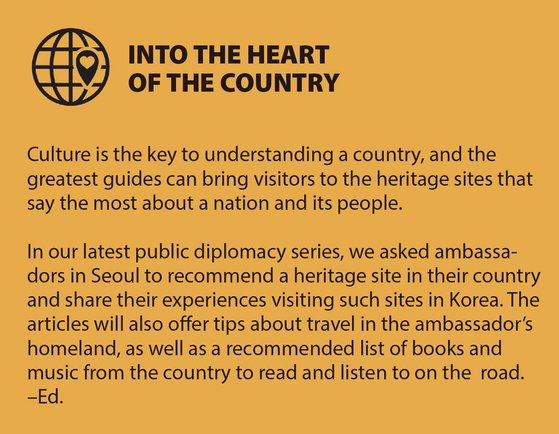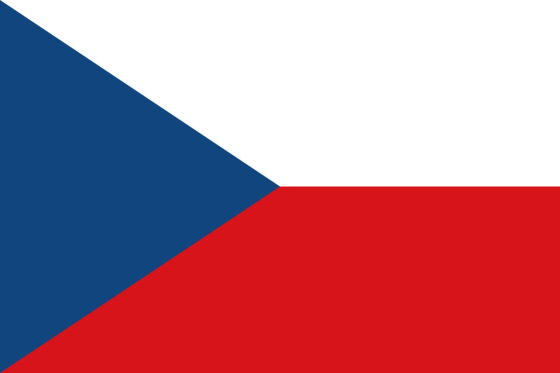[Into the heart of the country] Fairy-tale fantasies are just the beginning when it comes to the castles of the Czech Republic
![The area surrounding Litomysl Castle in Pardubice region of the Czech Republic. [CZECH TOURISM/LIBOR SVACEK]](https://koreajoongangdaily.joins.com/data/photo/2020/09/10/4bd6f3e7-19f9-4453-bf6b-47d2017b8abe.jpg)
The area surrounding Litomysl Castle in Pardubice region of the Czech Republic. [CZECH TOURISM/LIBOR SVACEK]

The 2,000 castles and chateaus of the Czech Republic may look like they've come straight from a fairy tale, but a closer look reveals centuries of realities that shaped the nation.
“Hop in a car and explore the romantic castles of the Czech Belle Époque,” said Gustav Slamecka, Czech ambassador to Korea. “Easily reachable from Prague is the Konopiste Castle, once the home of Franz Ferdinand d´Este, whose assassination triggered World War I. Further, Chateau Hluboka, located on the way to Cesky Krumlov and built in the style of England's Windsor Castle, was featured in K-pop music video L.O.V.E with Park Ji-hoon. For gothic castle lovers, there is Bezdez Castle, Castle Zvikov or Castle Klapy [also known as Hazmburk Castle]. For those who fancy Cesky Krumlov, I’d also recommend a visit to Loket.”
Many of these castles were built in the Medieval Ages and renovated during the Renaissance, Baroque, Classical and Romantic periods. Litomysl Castle — with its two-storied, arcaded gallery in the southern wing, neoclassical theater in the western wing and an interior that is Renaissance in design with lavish late Baroque ornamentations — has even been recognized by Unesco for its authentic integration of the original state with hundreds of years of successful modifications.
“No attempt has been made to select a particular period to display, but instead the organic evolution is presented in its entirety,” Unesco says about the castle on its website. “The current form and appearance, including the floors with open Renaissance arcades in the courtyard and sgraffito decorations on the facades and on the gables, are defined by the original design.”
![Czech Ambassador to Korea, Gustav Slamecka, speaks with the Korea JoongAng Daily at the Czech Centre Seoul in central Seoul on Aug. 10. [PARK SANG-MOON]](https://koreajoongangdaily.joins.com/data/photo/2020/09/10/814ac2f6-4d55-435d-a39e-c05e8d6dbc5d.jpg)
Czech Ambassador to Korea, Gustav Slamecka, speaks with the Korea JoongAng Daily at the Czech Centre Seoul in central Seoul on Aug. 10. [PARK SANG-MOON]
Slamecka recently sat down with the Korea JoongAng Daily to offer his tips on what to look for during a visit to the historic castle of Litomysl and its city. The following are edited excerpts of the interview.
The castle is located above the town center on Castle Hill and surrounded by a French formal garden and an English style castle garden — which isn't unusual on the premises of important castles in the Czech Republic — and also features a brewery, riding hall, stables and carriage house.
Litomysl is less crowded than some other tourist spots, which can be appreciated especially when staying overnight. The city of Litomysl has just over 10,000 citizens.
Next to the castle there is a recently renovated convent complex with gardens with modern art, like Olbram Zoubek statues, and with two churches worth visiting. These churches have quite similar names — the first is called Piarist Church of the Discovery of the Holy Cross and the second is called Church of the Exaltation of St. Cross, but they are quite different. If you have time to visit only one of them, I recommend the first one since it was recently beautifully restored. The church has a very nice observation platform with a good view of the castle.
![Litomysl Castle in Pardubice Region of Czech Republic was inscribed as a Unesco World Heritage site in 1999. [CZECH TOURISM/LIBOR SVACEK]](https://koreajoongangdaily.joins.com/data/photo/2020/09/10/c6135469-1c6e-4ba2-95af-cf1b36eddf23.jpg)
Litomysl Castle in Pardubice Region of Czech Republic was inscribed as a Unesco World Heritage site in 1999. [CZECH TOURISM/LIBOR SVACEK]
Another attraction of Litomysl is Portmoneum, a unique museum dedicated to exceptional artist Josef Vachal (1884-1969). Vachal was a writer, illustrator and printmaker who was a unique character with a rather enigmatic art style. The museum presents a sweepingly complex collection of imagery that is very difficult to interpret.
All in all, Litomysl on a small scale offers everything the tourists visiting the Czech Republic are looking for. And I am happy and proud to promote it to Korean tourists.
The main building of Litomysl castle, a four-winged structure from the outside, keeps its original style. The courtyard has three-story arcades at three sides, and on the northern wall are large sgraffiti depicting ancient and biblical scenes.
There are around 8,000 sgraffito bricks that fully cover its exterior and the castle strongly stands out amid its Baroque surroundings.
![Sgraffito bricks of Litomysl Castle in Pardubice region of the Czech Republic. [CZECH TOURISM/LIBOR SVACEK]](https://koreajoongangdaily.joins.com/data/photo/2020/09/10/8217e0f7-bd19-4d24-8c9d-022d7f07eaf9.jpg)
Sgraffito bricks of Litomysl Castle in Pardubice region of the Czech Republic. [CZECH TOURISM/LIBOR SVACEK]
The aristocratic family of the Trauttmansdorffs, originally from Austria, acquired the castle in 1649. They redesigned some of the castle’s interiors in the Baroque style and the work was conducted by Franz Maxmilian Kanka. Luckily, the exterior of the castle remained original since it was considered representative enough and did not call for changes.
In 1758, the Waldsteins became the new owners and they contributed to [building] the castle theater. The famous Czech composer Bedrich Smetana was born in the castle’s brewery in 1824. His father served as a brewer at the court of the Waldsteins. The Waldsteins have remained one of the most prominent noble families in Bohemia. Probably the most remembered and prominent member of the family was Albrecht von Waldstein, the supreme commander of the armies of the Habsburg Emperor Ferdinand II and a major figure of the Thirty Years' War. Albrecht is not directly connected with Litomysl but represents the Waldstein family at the peak of their wealth.
The last private owners of the castle were the Thurn-Taxis family. They did not live in the castle and owned it till the end of World War II. Nowadays, Litomysl Castle is owned by the Czech state.
It can be said the noble families who owned the castle belonged to prestigious and important families in their time. The reasons why the castle changed hands had to do with financial difficulties or marriages.
![Litomysl Castle in Pardubice region of the Czech Republic, which was inscribed as a Unesco World Heritage site in 1999. [CZECH TOURISM/PAVEL VOPALKA]](https://koreajoongangdaily.joins.com/data/photo/2020/09/10/0aaf6d68-2024-4010-bd55-596ca7931aa5.jpg)
Litomysl Castle in Pardubice region of the Czech Republic, which was inscribed as a Unesco World Heritage site in 1999. [CZECH TOURISM/PAVEL VOPALKA]
![Gangsanseong Fortress in Gongju, South Chungcheong, is part of the Baekje Historic Areas inscribed as a Unesco World Heritage site in 2015. [CULTURAL HERITAGE ADMINISTRATION]](https://koreajoongangdaily.joins.com/data/photo/2020/09/10/8f236de3-aced-42fe-9c90-fe4e12fdecd4.jpg)
Gangsanseong Fortress in Gongju, South Chungcheong, is part of the Baekje Historic Areas inscribed as a Unesco World Heritage site in 2015. [CULTURAL HERITAGE ADMINISTRATION]
In the Baekje Historic Area, I visited Gongju of South Chungcheong, the capital city in Ungjin Period, where I saw the Gongsanseong Fortress and the Royal Tombs in Songsan-ri. At the fortress, apart from the beautiful walk by the walls and inside the fortress, I learned about the “falling butterflies,” who were in fact ladies from the court of the Baekje King, wearing colorful dresses, who jumped into the river from the rock in the fortress to prevent themselves from being captured by attackers of the fortress. I also visited Buyeo County, the capital city in the Sabi Period.
When Czechs ask me about which special places to visit in Korea for cultural and historical experiences, I recommend Baekje to see cultural monuments and also to learn about the Baekje Kingdom. And learning by exploring the place is much more interesting and fun than just reading a book.

• Capital city: Prague
• Area: 78,867 square kilometers (80 percent of the size of South Korea)
• Population: 10.7 million (2020)
• Main language: Czech
• Ethnic groups: Czech, Moravian, Slovak and other
• Religions: Roman Catholic, Protestant and other
• National day: Oct. 28, Czechoslovak Independence Day
• Government type: Parliamentary republic
• Currency: Czech koruna
Travel tips
• Best time to visit: The castle is closed during winter. Due to the Covid-19 situation, check litomysl.cz for updates.
• Recommended tours: Take the tour that includes a visit to the castle theater and gets you a closer look at the exterior design of the castle.
• Recommended accommodation: The ambassador recommends hotel Aplaus, a renovated medieval house right between the castle and historical center of the city and within walking distance to the whole Litomysl. “The stay there can be very romantic, and also culinary,” he says.
• What to eat: Local beers and local East Bohemian cuisine. The region is famous for honey and potatoes, so try food based on these ingredients such as gingerbread from the Pardubice region or potato dumplings with various fillings.
• Books to read before the trip: Books by Franz Kafka, Milan Kundera, Karel Capek, including “R.U.R.,” and Bohumil Hrabal, including “I Served the King of England,” “Closely Observed Trains” and “Too Loud a Solitude.”
• Movies to watch: “Cosy Dens,” “Pupendo” or “The Wonderful Years that Sucked" — just a few of famous Czech comedies — or films by Milos Forman, Vera Chytilova, Jiri Menzel or Juraj Herz.
• Music to listen to: Classical music by Antonin Dvorak, Bedrich Smetana, Leos Janacek and Bohuslav Martinu.
BY ESTHER CHUNG [chung.juhee@joongang.co.kr]










with the Korea JoongAng Daily
To write comments, please log in to one of the accounts.
Standards Board Policy (0/250자)